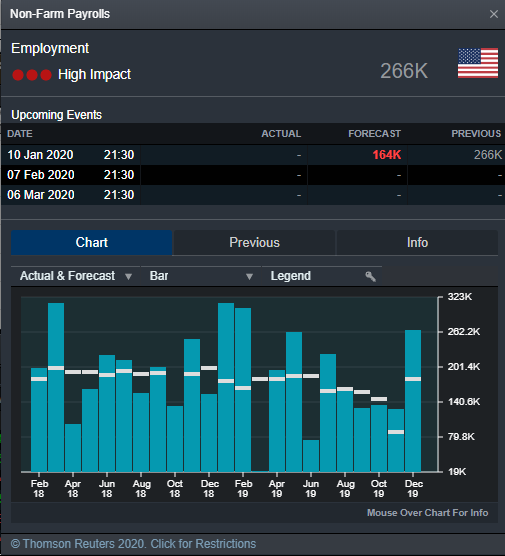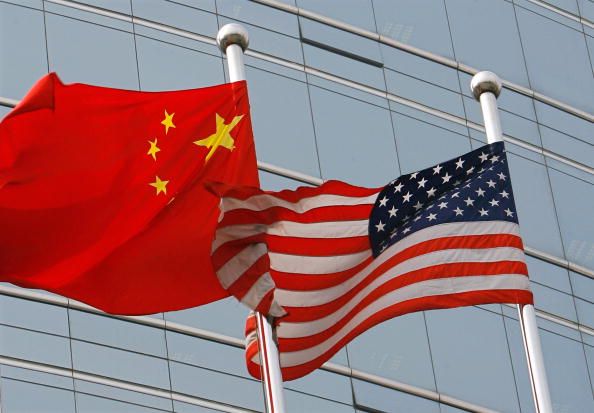Chinese officials have confirmed a phase-one trade deal will be signed in Washington on 15th January, led by Vice Premier Liu He. This helped to clear the last hurdle in the markets following a de-escalation in US-Iran tensions.
The question is how much more upside is there, given the fact that December’s rally have more or less priced this in.
US equities closed at record highs on Thursday, boosted by fading geopolitical tensions and a confirmation of the signing of the trade deal. Tonight’s US non-farm payroll, unemployment and salary data will be in focus, as it reveals the health of the US jobs market. This week’s ADP private payroll smashed market expectations on the upside and November’s reading was revised up higher. Forecast for tonight’s non-farm reading is 164k. An upbeat number could boost dollar and US equities and lead to more selloff in gold and safe-havens.
Unwinding activities to put pressure on gold in the short term, immediate support at 1,550 and then 1,532. In the mid to long term, however, the central bank’s accommodative policy stance and potential re-escalation of geopolitical tensions put gold in a good position to jump up again.
Asian EM equity is posited for a potential ‘catch-up’ rally with global peers this year, as they have largely underperformed in 2019.
Sector wise, cyclical upswings in the global economy may put manufacturing, consumer discretionary, financials and industrials in a better position this year. Defensive sectors and interest rate sensitive sectors might underperform. Hong Kong & Singapore equities are relatively undervalued.
China’s December headline CPI stayed on par with November’s level, at 4.5%, as the rise in the cost of port slowed after authorities released more than 100k tones of reserves to meet a seasonal peak of demand as we move closer towards the CNY holiday. Food alone, contributed more than 4% increase in the CPI reading. Going forward, port prices are likely to remain elevated for the first half of the year.
PPI, which measures the cost of goods at the factory gate, however, has fallen 0.5% in December year-on-year, suggesting demand for production is weak.
China’s export growth is set to rebound to mid-high single digit in December, due to seasonal rise in orders and improved trade sentiment after the phase one deal was agreed.
China’s GDP may rebound slightly in Q4 from Q3’s reading of 6.0, driven by infrastructure projects. Private sector manufacturing activities continued to shrink, suffering from the scaling down of factory activities due to the US tariffs. This will add even more uncertainty in terms of job security and salary growth, which, in turn, will put pressure on consumption, even if substantial public sector growth acts to counter these negative pressures.
US Non-farm payroll

Disclaimer: CMC Markets is an execution-only service provider. The material (whether or not it states any opinions) is for general information purposes only, and does not take into account your personal circumstances or objectives. Nothing in this material is (or should be considered to be) financial, investment or other advice on which reliance should be placed. No opinion given in the material constitutes a recommendation by CMC Markets or the author that any particular investment, security, transaction or investment strategy is suitable for any specific person. The material has not been prepared in accordance with legal requirements designed to promote the independence of investment research. Although we are not specifically prevented from dealing before providing this material, we do not seek to take advantage of the material prior to its dissemination.






